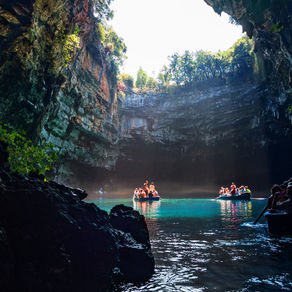Wetland of Kalloni Gulf | Lesvos | A Crucial Hub of Biodiversity in North Aegean
- Shiny Greece
- Nov 29, 2019
- 2 min read
Updated: Aug 11, 2024
Authors
George Papadellis | SG Head
with some good tips from AI
The wetland of Kalloni Gulf, located in the south-east of the island of Lesvos, is an important natural area for the preservation of biodiversity and the ecological balance of the region and one of the most important ecologic assets of Lesvos. Covering an area of 14,000 hectares, the wetland consists of a complex network of lagoons, salt marshes, reed beds, mudflats and more that provide a vital habitat for a wide variety of plant and animal species. In this article, we explore the importance and characteristics of the wetland and the threats it faces.

Photo by: iStock.com | CreativeNature_nl
The Features
Kalloni Gulf wetland covers an area of approximately 14,000 hectares. It consists of a network of torrents (Mylopotamos, Tsikneas), salt marshes (Skala Kallonis, Parakila), olive groves, woods, salt-pits (Kalloni, Polichnitos), lagoons, reed beds and mudflats, and it is fed by several rivers and streams that flow into the Gulf. The wetland is characterized by its rich biodiversity, with more than 300 species of birds (66 of which are migratory), 60 species of fish, and numerous species of plants and animals. Some of the most important bird species that use the wetlands as a breeding, feeding or resting site include the greater flamingo, the avocet, the black-winged stilt, and the Kentish plover. This fact has helped bird-watching tourism to start flourishing in the island. In addition, the wetlands are home to several species of amphibians and reptiles, including the European pond turtle, the European green toad, and the Balkan whip snake.

Sunset at Kalloni Wetlands | Photo by: Angeliki Argyriadou, Paraktii Ygrotopi Kolpou Kallonis, CC BY-SA 4.0
Threats to the Wetland of Kalloni
The main threats include agricultural practices, urbanization, and tourism. The wetland is surrounded by intensive agricultural land use, with the use of pesticides and fertilizers posing a significant threat to the quality of the water and the health of the ecosystems. Urbanization and tourism have also led to the construction of buildings and infrastructure in and around the wetland, leading to habitat fragmentation and loss of biodiversity.

Flamingos Resting in the Wetland of Kalloni Gulf Lesvos | Photo by: Ritos80, Flamingos resting, Kalloni gulf, Mytilene, CC BY-SA 4.0
Conservation
The wetland of Kalloni Gulf is an important natural area that provides a range of ecological, economic, and social benefits. However, the threats facing, including agricultural practices, urbanization, and tourism, must be addressed if they are to be preserved for future generations. The conservation of the wetland requires a collaborative effort between stakeholders, including local communities, governments, and conservation organizations. By working together, we can ensure that this wetland will continue to provide vital services for both people and wildlife, and contribute to the protection of biodiversity and the mitigation of climate change.
































































The wetlands are of amazing natural beauty and at the same time maybe the most important of the Aegean islands!